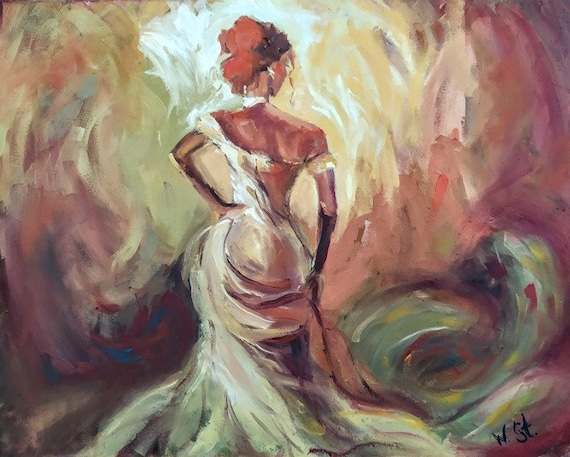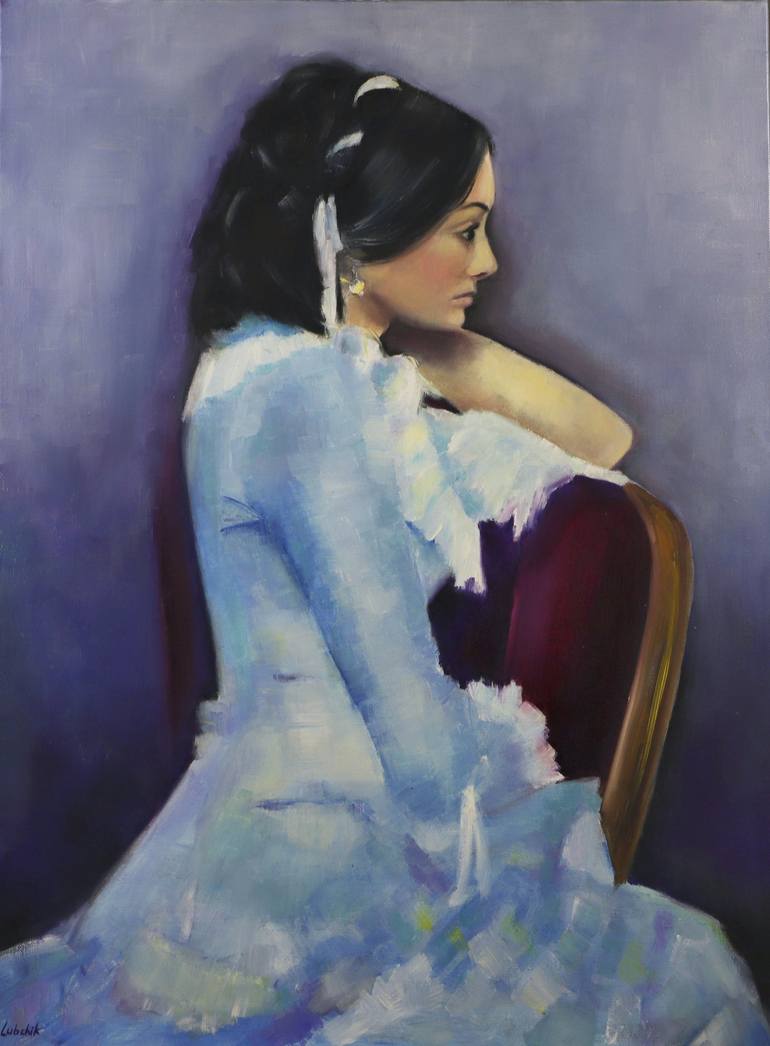The Influence of Figurative Oil Painting on Modern Art and Society
The Influence of Figurative Oil Painting on Modern Art and Society
Blog Article
The Duty of Feeling and Expression in Metaphorical Oil Painting: An Extensive Evaluation of Subject and Make-up
The interaction of feeling and expression in figurative oil painting serves as a critical lens with which one can examine the intricate partnership in between subject issue and make-up. Artists harness numerous methods, from shade choice to brushstroke dynamics, to grow emotional vibration within their works.
Understanding Emotion in Art
Emotion in art offers as a powerful conduit for expression, allowing artists to share intricate sensations through their job. In metaphorical oil painting, this psychological deepness is frequently represented through the representation of the human number, recording the nuances of human experience. The selection of subject matter, color combination, and brushwork all add to the psychological resonance of an item.
Artists regularly bring into play individual experiences, social concerns, or global styles to stimulate sensations in the customer. A portrait might mirror susceptability, while a vibrant number in movement can signify liberty or chaos. These psychological strings connect the audience to the artwork, cultivating a dialogue that goes beyond the aesthetic medium.
In addition, the interplay in between light and darkness can magnify psychological intensity, leading the viewer's look and accentuating particular components within the structure. Using texture in oil paint additionally includes layers of intricacy, welcoming a responsive response that boosts the psychological experience. On the whole, understanding emotion in art is essential for valuing the nuances that define figurative oil paint, as it changes plain depiction into a profound exploration of the human condition.
Crucial Element of Structure
In the world of metaphorical oil painting, the make-up works as the underlying structure that organizes aesthetic elements and improves the emotional narrative. Vital parts of composition consist of equilibrium, contrast, prime focus, and rhythm, each adding to the total influence of the art work.
Equilibrium describes the distribution of visual weight within the paint, which can be attained with in proportion or asymmetrical setups. A well-balanced make-up provides stability, allowing the visitor to engage with the piece harmoniously - figurative oil painting. Comparison, on the other hand, involves comparing different elements, such as dark and light or cozy and amazing colors, to direct the viewer's eye and evoke emotional feedbacks
The focal factor is vital, as it directs focus to the most considerable component of the painting, commonly highlighting the psychological core of the story. By masterfully incorporating these vital components, artists can craft psychologically resonant and engaging figurative oil paints that astound and engage their audience.
Topic Issue and Its Effect
Subject issue plays a critical function in figurative oil painting, as it not just offers as the foundation for the narrative but likewise shapes the visitor's interpretation and psychological engagement with the art work. The selection of subject-- be it a singular number, a team dynamic, or a thematic representation-- straight influences the psychological environment shared to the audience.

For instance, portraits frequently evoke individual connections, disclosing the ins and outs of human expression and personality, while scenes portraying communal tasks can create a sense of belonging or fond memories. The historical and social context of the subject matter improves the audience's understanding, motivating much deeper reflections on social norms, worths, and the human problem.
Various subjects likewise produce differing levels of interaction; a dramatic conflict portrayed through numbers in stress might generate feelings of stress and anxiety or compassion, while tranquil landscapes can conjure up serenity and consideration. Eventually, the impact of subject matter in figurative oil painting is profound, as it serves as a conduit for psychological resonance, guiding the audience's response and analysis, and cultivating a connection in between the art work and the onlooker. This interaction is vital for the effective interaction of the artist's intent.
Techniques for Evoking Sensations
The efficiency of figurative oil painting in sharing feelings is substantially affected by the methods employed by the artist. One of the most important techniques is making use of shade theory, where the strategic choice of colors can evoke particular psychological reactions. Cozy colors, such as oranges and reds, often generate sensations of interest or aggression, while cooler tones like blues and greens often tend to evoke calmness or unhappiness.
An additional vital technique is the manipulation of light and darkness, called chiaroscuro. This technique improves the three-dimensionality of figures, creating dramatic contrasts that can escalate psychological depth. The placement of light can guide viewers' feelings, highlighting particular aspects of the composition.
Brushwork also plays an essential duty; loose, expressive strokes can communicate energy and spontaneity, whereas smoother strategies may recommend serenity or accuracy. Furthermore, the plan of subjects within the composition can affect psychological effect. Close proximity can suggest intimacy, while range may indicate isolation.
Eventually, the mix of these strategies enables musicians to craft stories that resonate with the visitor, transforming a simple aesthetic experience into an expressive psychological trip. - figurative oil painting

Situation Researches of Significant Functions
Checking out noteworthy works of metaphorical web link oil painting reveals how numerous methods are utilized to stimulate effective emotions. One excellent case is Edvard Munch's "The Scream," where the altered number and swirling history convey existential fear. Munch's use shade-- deep blues and vibrant oranges-- heightens the emotional influence, showcasing how palette choices can form visitor experience.
Another significant work is Pablo Picasso's "Les Demoiselles d'Avignon." Below, fragmented types and vibrant brushstrokes mirror a turbulent emotional landscape, testing typical representations of the female number. Picasso's cutting-edge structure not only records the visitor's interest however additionally invites Website contemplation on styles of identity and sexuality.
Furthermore, Frida Kahlo's "Both Fridas" uses a poignant exploration of duality and self-identity. The contrasting figures, linked by a shared heart, exhibit Kahlo's emotional depth and individual narrative. figurative oil painting. Her meticulous focus to information and symbolic aspects offer to engage customers on a visceral degree
These study highlight the extensive link in between emotion and composition in metaphorical oil painting, revealing just how musicians harness strategy to communicate complicated feelings and stories that resonate throughout time and society.

Conclusion
In conclusion, the interplay of emotion and expression in metaphorical oil painting considerably enhances the viewer's experience and interpretation of the art work. Through a mindful choice of topic and compositional techniques, artists share extensive stories that resonate on both universal and individual degrees. The application of shade brushwork, chiaroscuro, and theory further amplifies emotional depth, transforming each canvas right into a powerful reflection of the complexities of the human experience.
In metaphorical oil paint, this psychological deepness is commonly depicted through the representation of the human figure, recording the nuances of human experience.Furthermore, the interplay in between light and darkness can magnify psychological strength, directing the audience's stare and drawing focus to certain elements within the make-up. The use of structure in oil painting additionally includes layers of intricacy, welcoming a tactile response that boosts the emotional experience.The focal factor is crucial, as it guides interest to the most considerable part of the websites paint, often highlighting the psychological core of the story. Ultimately, the influence of subject issue in metaphorical oil paint is extensive, as it offers as an avenue for psychological resonance, guiding the viewer's response and interpretation, and promoting a link between the art work and the viewer.
Report this page